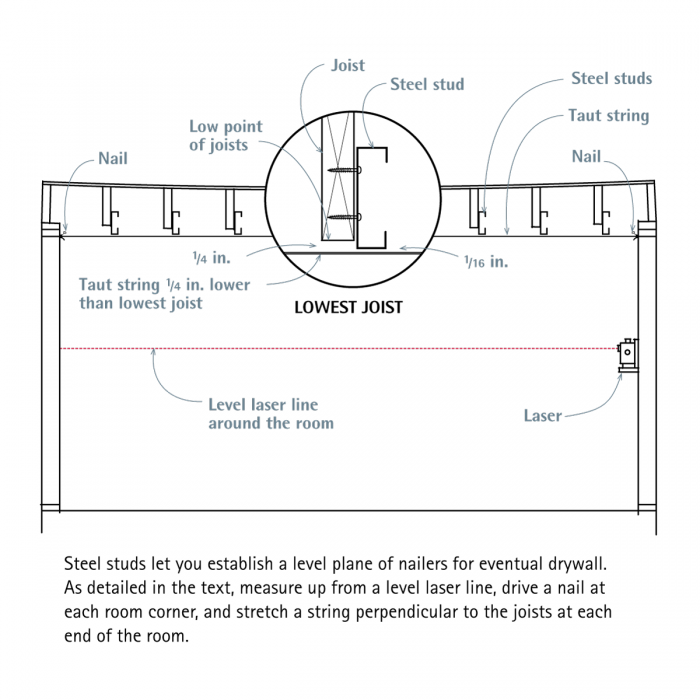Using Metal Studs to Level a Sloping Ceiling
Metal studs are light enough to go up quickly, but sturdy enough to support a new drywall ceiling.

As shown in the illustration above, metal studs really shine when you need to level a ceiling whose slope would be especially noticeable against, say, cabinets with crown molding. Because metal studs are so light, they go up quickly, yet they are sturdy enough to support a new drywall ceiling. This procedure is called “furring down a ceiling,” and using metal studs is much easier than ripping tapered wooden strips to create a leveled ceiling, which is hugely time-consuming and often doesn’t look very good.
- Start by tearing out the existing drywall or plaster ceiling to expose the ceiling joists. (If ceiling joists are undersize or rotted, fix those conditions first.)
- Using a laser level, establish a level line around the room, 1⁄4 in. below the lowest point of the ceiling joists.
- At this height, drive nails into the corners of the room. Stretch string perpendicular to the ceiling joists at both ends of the room and roughly every 3 ft. or 4 ft. in between.
- With the aid of a helper, lift the steel studs over the leveled strings, and lower each stud until its bottom edge is 1⁄16 in. above the strings. (The 1⁄16-in. gap is necessary to avoid moving the alignment strings.)
- Once each steel stud is correctly positioned, use 1-in. self-drilling screws to attach it to a joist face; space screws every 16 in. along the length of the stud. Place screws back at least 1⁄2 in. from the lower edge of the joist. Use aviation snips or a metal-cutting blade in a reciprocating saw to cut lightweight steel studs.
This blog was adapted from Renovation 5th Edition (Taunton, 2019). A hefty 656 pages, R5 is a trove of pro tips and techniques that builders shared with me over four decades, plus roughly 1000 photos taken on job sites across North America. I hope you find it useful. – Mike





